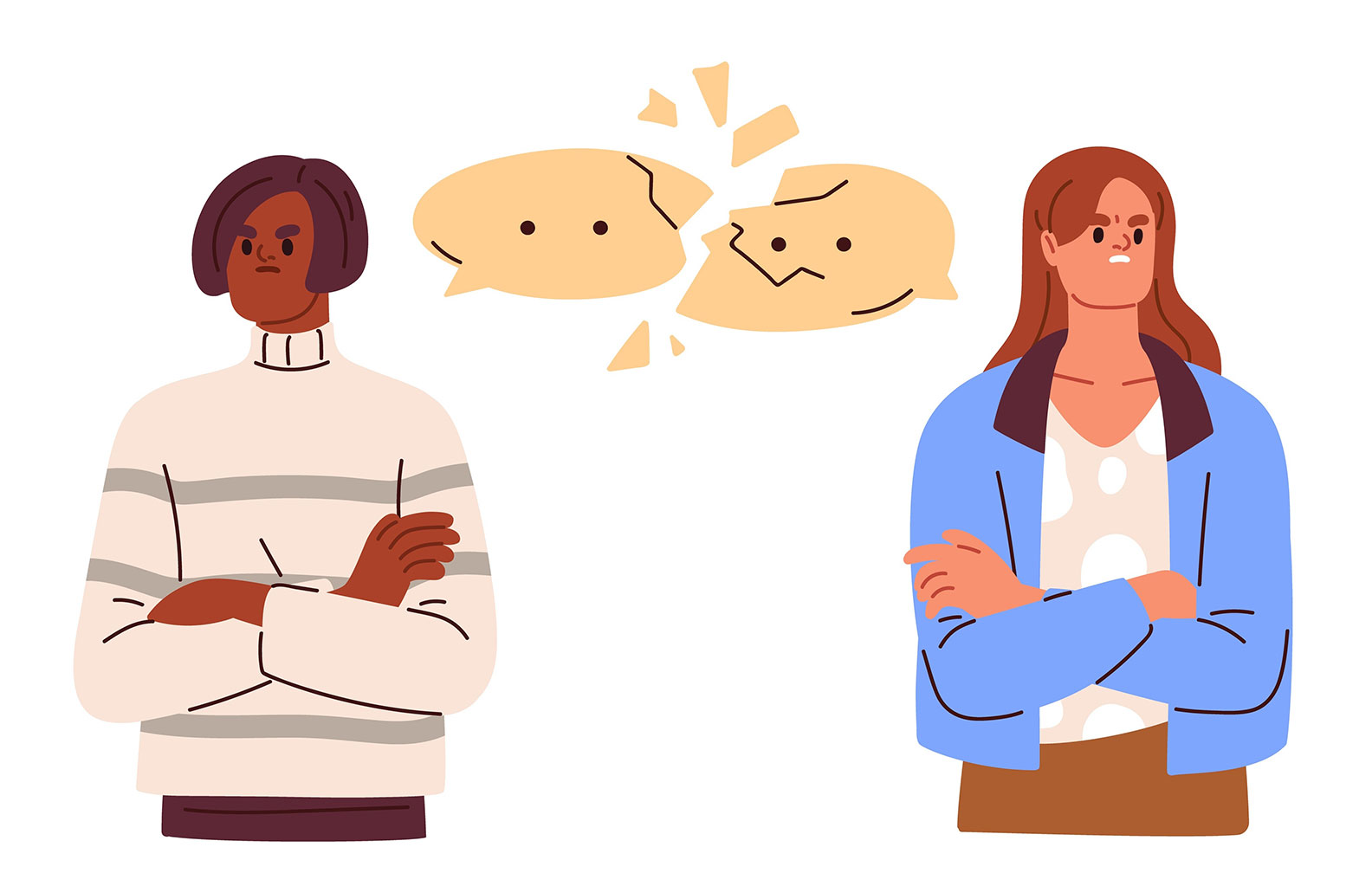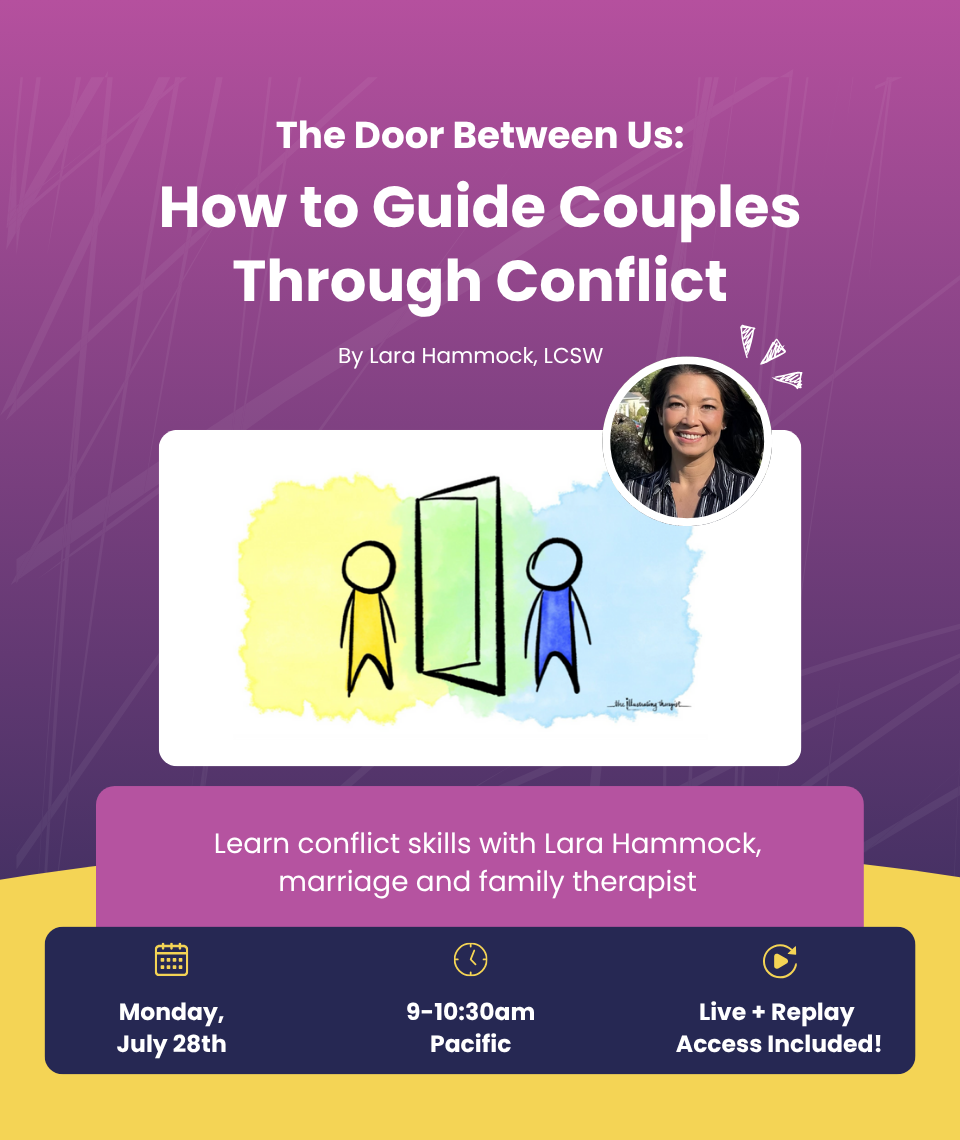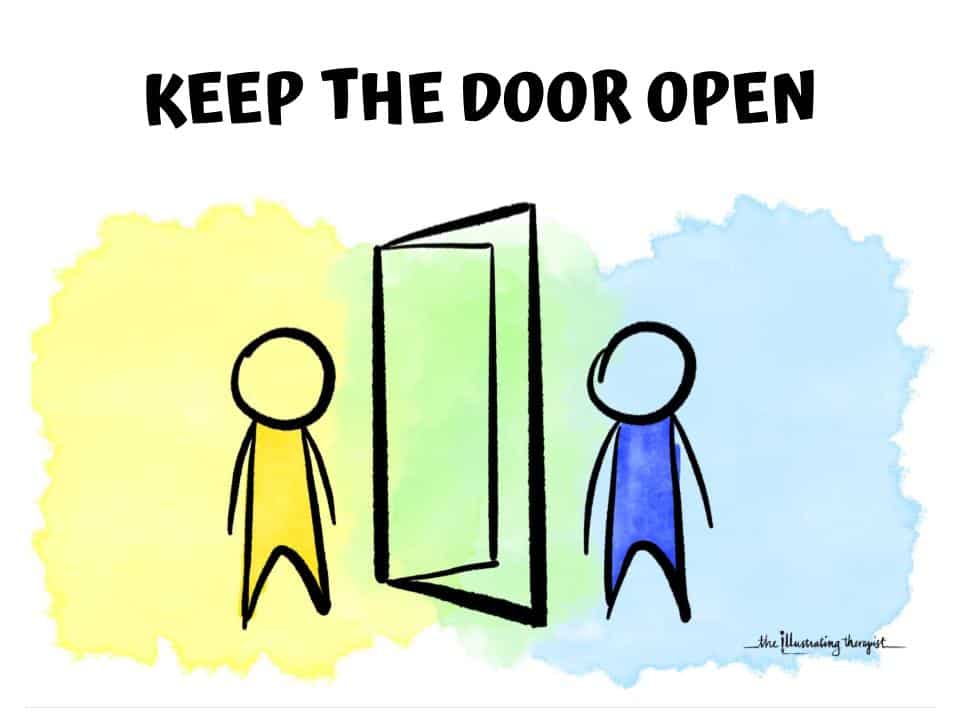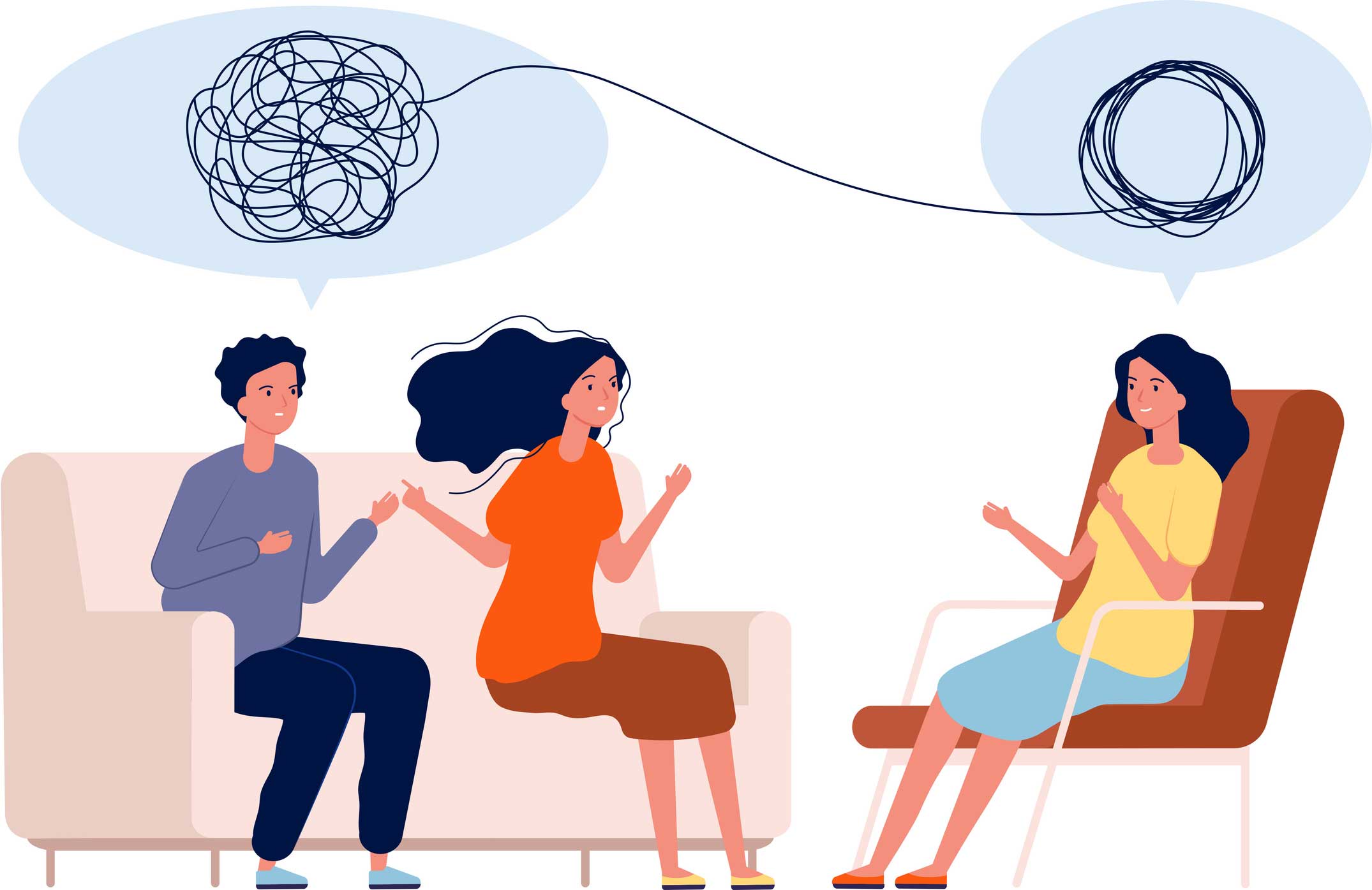It’s frustrating when a couple seeks your help — and then resists every effort you make. I’ve been there, and you have too – possibly too many times to count.
And in a lot of these situations, we’re seeing a couple whose relationship is filled with passive aggressive behavior.
Today we’ll explore specific ways to stay out of the frustrating labyrinth that passive aggression creates.
What Fuels Passive-Aggressive Behavior
If passive-aggressive patterns show themselves early, you can be sure that fear and defensiveness are already crouching in the corner, waiting to pounce the moment you pose a direct question that might expose one or both partner’s vulnerabilities.
These patterns began in childhood, when one or both partners discovered they weren’t going to receive the love and support they needed. Passivity became a way of dealing with grief and disappointment. Anger followed as they became enraged about their desires that went unseen and unsupported by parents, caregivers, or other powerful adults.
You’re watching what happens when hurt children grow up without learning how to say what they want, or receive nurturing and reassurance. Blaming others becomes a way of coping with the disappointments of life – a deeply flawed solution that spawns its own set of problems.
Not knowing what they desire protects them from the pain of trying and failing. When you ask a common therapy question about what they want, the responses describe what they don’t want or are vague elusive answers. It is very challenging for the client or therapist to get clarity.
Passive aggressive responses show up among people of many different personality types. These responses often take the form of complaining strongly about a problem or situation without participating in moving things forward.
Yes, a part of this client wants things to be better. But they are too frightened to release their entrenched dysfunctional coping mechanisms.
How You Can Shift This Harmful Dynamic
If you start by tackling this couple’s problems head-on, you’re likely to hit an immediate series of roadblocks. Neither person wants to take the risk. Or put in the sustained effort. Not to learn new skills. Not to improve listening. Not to examine their own part. Instead, they want you to do 100% of the work and change the other partner, because this is where they believe the problems all lie.
Incidentally, when you directly address these “problems,” you trigger a wave of defensiveness and behavior designed to lead you off course.
Here’s one way to approach this dilemma. Have a discussion with the couple about the difficulty EVERY person struggles with in attempting to improve habits, attitudes, and emotions. A part of every person seeks to be relieved of pain, anguish, insecurities, fears and bad habits. But another part of us is highly reluctant to give up self-protective coping strategies we learned earlier in life.
Try this:
“Take a moment. Each of you, think about how you’d like to be seen by your partner in a part of your relationship that matters to you.”
Then ask: “What effect would that have on you? And what would you need to do differently to be seen that way?”
Then discuss what they came up with.
Then say, “If change was easy or simple you would just go out and do it. So let's discuss why it would be hard for a part of you to actually go forth and create this change on a consistent basis.”
This approach sets the stage to do good two-chair work. The “aspiring self” talks to the “protective self” and the therapist guides the discussion between the two conflicting selves.
Tell your couple that whenever we talk about goals here we need to keep in mind those internal battles. It is not enough to say you want your partner to change. We need to understand why it is difficult for your partner to give you what you want.
And it is also important to understand how you can make it easier for your partner to give what you want! When you make it easier for your partner to give you what you want you are working as a team.
TAKE ACTION NOW
Before you go, I hope you’ll share about your experiences counseling couples who struggle with passive aggression. Are there techniques and concepts that have worked well for you?
Share it in the comments. These real-world insights help all of us get sharper.
And if this dynamic shows up in your office often, we have a focused training on June 27 from 9-11am Pacific:
We’ll look at how to hold your leadership stance, cut through avoidance, and redirect over-functioning without burning yourself out.




 We respect your privacy.
We respect your privacy.





Thank you for this and the previous blog. I am new to couple’s counseling and I am trying to learning new and practical strategies for working with couples, especially those that are passive aggressive.
How do you approach a couple where one person gets so triggered by any attempts to know them that they are sent off in to fight or flight or shut down mode? Is that a passive aggressive couple when only one side of the couple has that reaction? And how do you proceed, Can you make them an observer while you deal with the more functional client and their reaction to those kind of responses from their point of view or are there other better approaches? How do you define the couple stage when the two people in it seem to be in almost opposite places?
Excellent example
” how you would like to be seen by your partner in an important part of your relationship.” Can you give me an example?
It’s an intŕesting reading. Every time I see your articles on my page ,I go through it, beginning to end.
Thank you for the invaluable tools I take away from your articles. I am fairly new to couples coaching and here is a tool I used recently, which gave the couple a dramatic turning point (especially for the guy, who was showing loads of passive aggressive responses). This tool comes from the book you recently shared with us – Insight Out by Vann Joines:). using Transactional Analysis (TA ) as a basis for understanding conflict and disconnection in relationship. I have worked with TA for years now as a communication model and am very comfortable with the many concepts it describes.
The exercise is part of rewriting our early ‘life script’ we have from early childhood experiences to get in touch with our own early life messages and help decide what you want to change for yourself: Hope this offers value to the community:)
Close your eyes for a moment and imagine you’re about 6 years old and hearing all the messages you have been getting from your parents. Use the following prompts to describe your experience:
1. Get in touch with what you’re experiencing emotionally as you hear those messages.
What are you feeling?
2. As you’re feeling that way, what are you concluding about your parents and about yourself? You are ________________________________________ and I am ___________________________________________________________________________
3. As a result of what you’re feeling and concluding, what are you going to do to take care of yourself? I’m going to __________________________________________________________
4. What’s your fantasy of what will happen if you do that? That way, ______________________________________________________________________________
5. If things get bad enough, what will you do? If things get bad enough, I will ______________________________________________________________________________
What’s your fantasy of what will happen then? And then
This is such an interesting approach and I love how it breaks down what “working as a team”, especially in the context of a couple relationship. Creating understand as why it is hard and also providing support in order to see the change one want to see in their partner. Will surely try this!
Thank you.
I love the sequencing here from how to show up or being seen, but it is also a boatload of empathy to what may be interfering. It is an effective way to reduce protectiveness and increasing empathy.
I love how this sequence of questions can lead a couple to to more openness and empathy, which, to me, really opens the possibility of changes in their relationship.
This is a terrific topic to address. These couples have to be one of the most challenging couples I’ve encountered and struggle with. Many times, not very successfully! Looking forward to the training.
Thank you Pete for bringing this up!!
It is amazing how quickly Dr. Excellent brought my husband back to me
It is amazing how quickly Dr. Excellent brought my husband back to me.
During my 25 years of working with couples, I continue to be humbled by the protector parts (we used to call them defenses) that show up in a chronic manner over the course of therapy. I find that individual sessions (as part of the couples work) that focus on developing more rapport with protector parts can help defenses soften enough for the client to experience and share the more vulnerable emotions underneath.
How I Survived After My Husband Left Me.
When I found out my marriage was over, I thought my life was over too. Dr. Excellent was the best thing that ever happened to me.
It is amazing how quickly Dr. Excellent brought my husband back to me.
How I Survived After My Husband Left Me.
When I found out my marriage was over, I thought my life was over too. Dr. Excellent was the best thing that ever happened to me.
It is amazing how quickly Dr. Excellent brought my husband back to me.
contact Dr.Excellent if you are passing through any difficulty in life or having troubles in your marriage/relationship